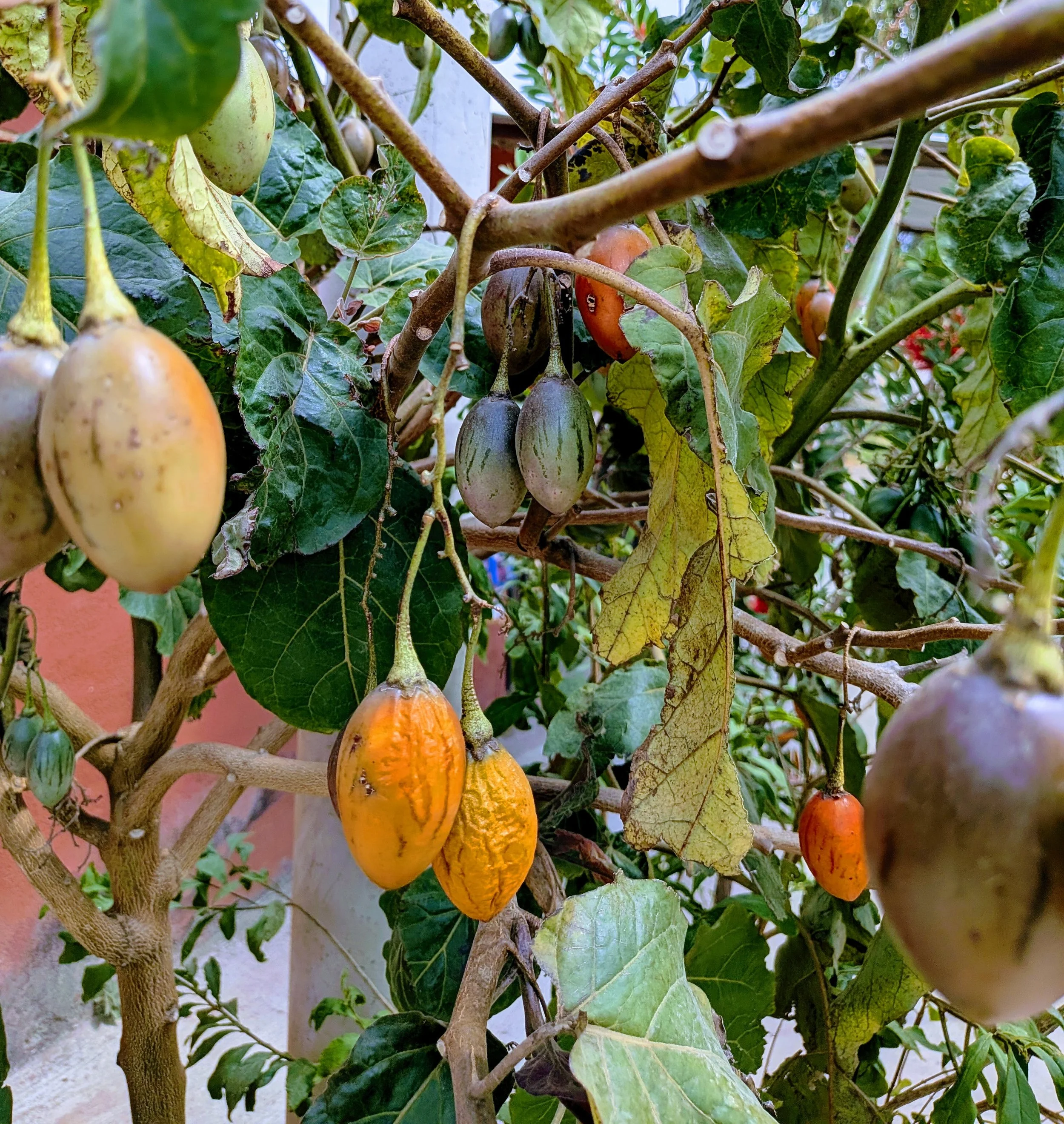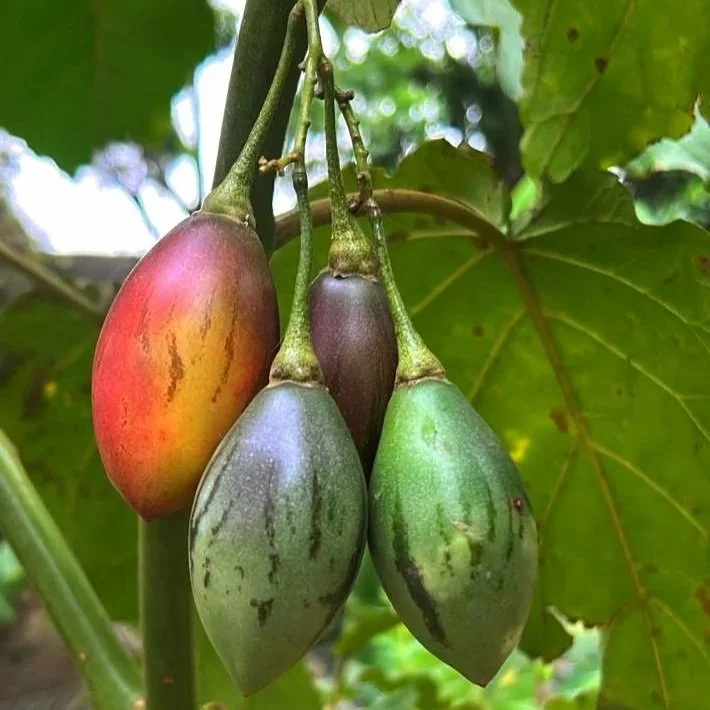Chilltu, tree tomato, or Solanum betaceum, in my neighborhood, with fruits ranging from immature to overripe.
Solanum betaceum was one of the first plants to catch my eye as I wandered around Montecillos, my neighborhood outside of the city of Cochabamba, Bolivia. The flower clusters (pale pink with yellow centers, akin to the wild vining nightshades we see in Vermont) and fruits screamed “nightshade!” but the woody stems and enormous leaves were like no nightshade I knew. The ripe fruits look not unline the Striped Roman tomato, and have a perfectly pointed oval shape all of their own.
Voila, the Tree Tomato, or chilltu, a fruit indigenous to the Andes, grown globally, and called by more than a dozen names.
In Bolivia, it is called tomate de árbol [tree tomato] in Spanish, chilltu in Quechua (a widely-spoken indigenous language of the Andes), or chilto in ‘Quechuañol’ (Quechua that has been adapted into Spanish). After I observed my first chilltu, I started to see them everywhere: at my local organic farm, at my Quechua language school, the fruits for sale in local markets, and, thrillingly, in my own yard!
The enthusiastic chilltu stewards I spoke with noted that the short-lived trees spring up of their own accord, and all had let them grow, looking forward to several years of harvest. However, many here are unfamiliar with the fruit, a phenomenon perhaps explained by the disparagement indicated by one of its additional names: “Poor man’s tomato.” The chilltu, while it can be used like a tomato, is more fruity and sour, with a thicker skin, and the cross-section reveals two earshaped lobes of dramatic black seeds. Here in Cochabamba, it can be found rarely in salsa, juices and marmalades. I hear that the more orange varieties are sweeter, while the redder fruits are more sour. The curious can watch three recipes being prepared by an Ecuadoran chef here.
[Above: A fruiting chilltu tree with its woody trunk, sliced mature fruits, flowers, and a bonus llama that lives at the school where I’m studying.]
I bought a bag of ripe fruits from the market, planning to try some recipes with them, but my enthusiastic family simply cut them in half and ate them like pudding cups by the spoonful before they could be transformed into anything more prepared. I don’t see them for sale very often and, these days, I am eagerly watching the chilltu at the top of my garden as the flowers turn from cloud pink into lime green droplets, swell to the size of duck eggs with pale stripes, and finally ripening, start to take on the oranges and reds of a Vermont hillside in fall.






